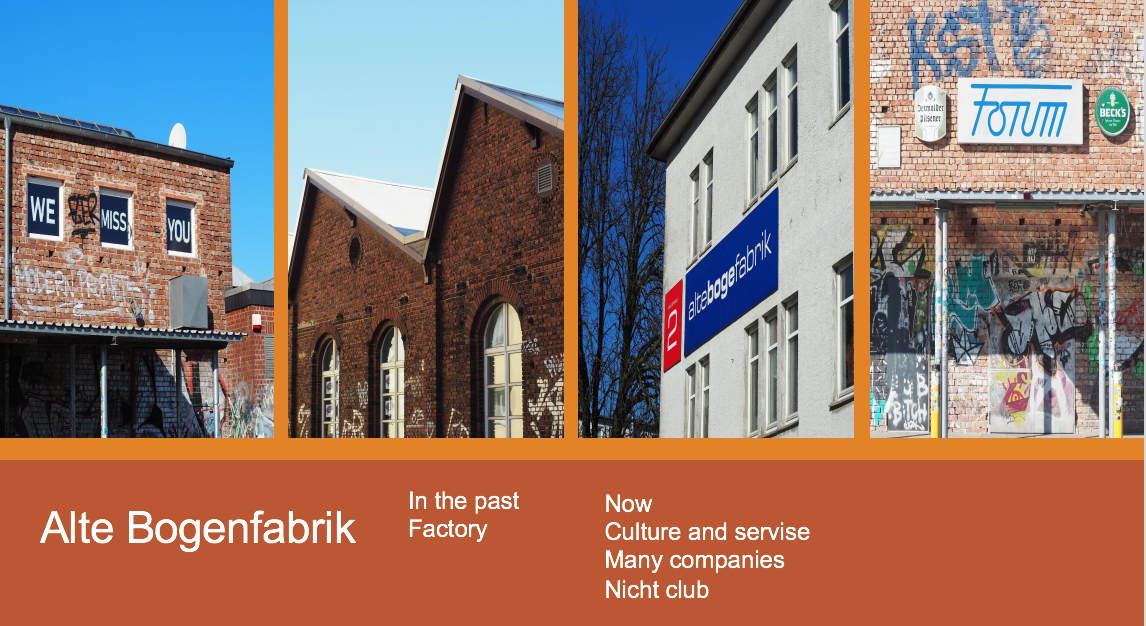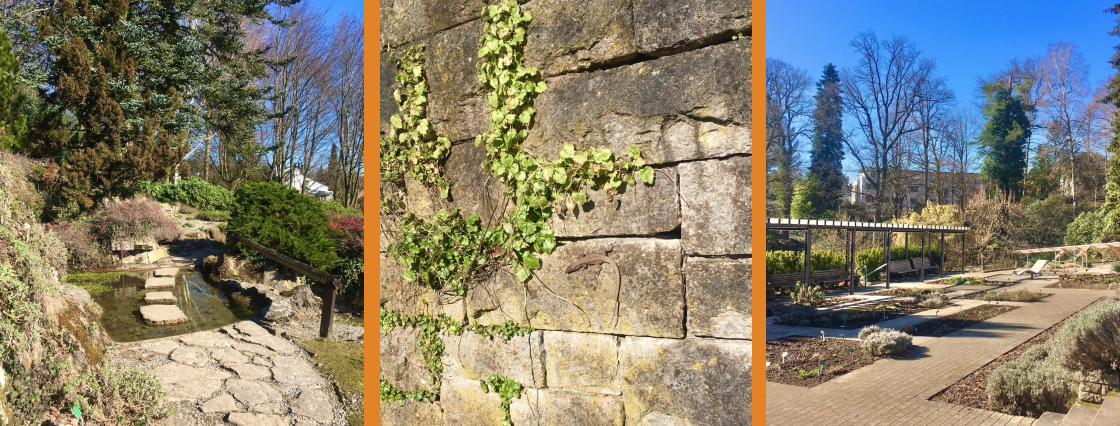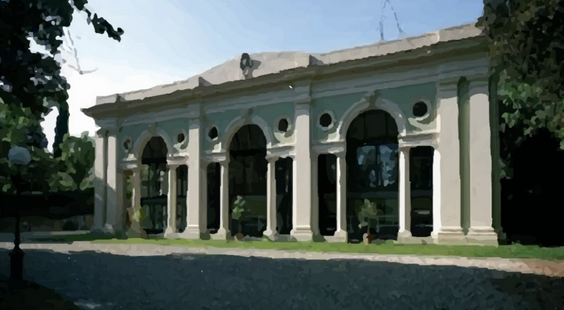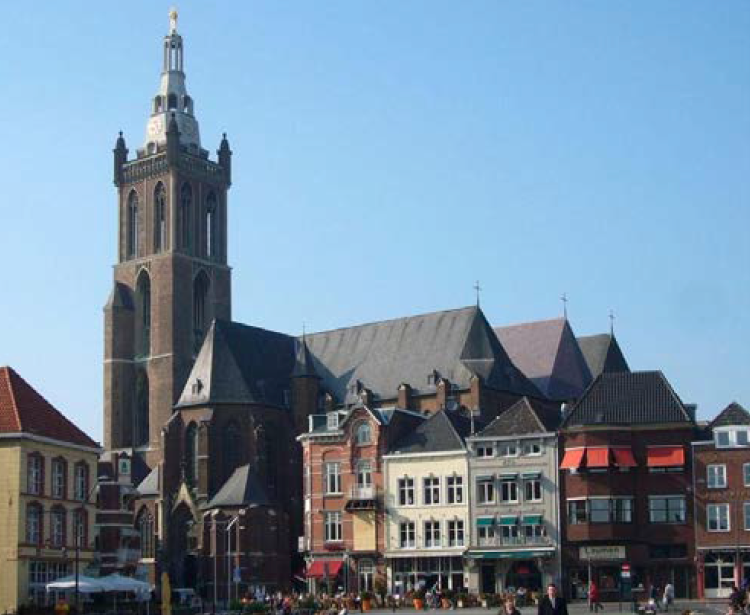Main navigation
1. Overview
Name
Description
Activities / Project Phases
Materials
Comments
Start date
2025-09-01End date
2025-09-012. Discover
Discover the Main Topic
The main topic to be discovered was the evolution of the selected cultural and historical places in cities Bielefeld, Florence, and Roermond, and their possible future in the context of Eurocities.
Short Description
We had to create a vision of the refunctionalisation of the selected cultural objects from our cities based on Eurocities goals. To be able to do so, we learned about Eurocities goals under https://eurocities.eu.
Then we looked for the cultural objects in our home cities to work with. We identified many interesting buildings and objects, but had to select up to 2 final assets from each city to be able to complete the entire project on time. Finally, we collected different data about the objects - pictures, stories, videos.
Discovery Activities
STEP 1: desk research: we viewed available sources about Eurocities and learned about Eurocities goals.
What is Eurocities?
Eurocities is the network of 190 cities in 39 countries. Their mission is to improve the quality of life of over 130 million residents through a wide range of activities, such as getting carbon emissions down to zero, welcoming migrants and refugees, or governing through dialogue with their residents.
Examples of Eurocities goals: Inclusive society, innovative city governments, prosperous local economy.
Within our desk research, we learned about common values for European cities and main principles of creating a sustainable future of urban places.
As a result, we got an idea of how any object in our home cities could be reused in order to meet the Eurocities goals.
STEP 2: Exploration: We discovered cultural and historical assets in our home cities bearing in mind Eurocities goals. Due to Corona crisis, we made it mainly at our computers. But sometimes it was also possible to go outside, view the real objects and take own pictures!
STEP 3: Pre-selection: We identified a few objects, the functions of which could be redesigned in line with Eurocities goals. In fact, there were so many interesting places in our cities we didn't know but wanted to share with other learners from our team! We prepared a few slides to visualize the past and presence of the pre-selected objects.
Look, for instance, at the historical buliding of Alte Bogefabrik in Bielefeld:

STEP 4: Brainstorming and selection of final objects: during our regular virtual meeting, our team discussed all the objects and selected the 6 final objects we continued to work with:
Alte Bogefabrik (Bielefeld):
Botanic Garden (Bielefeld):

Villa Strozzi Lemon House (Florence):

Gasometer (Florence):

Christoffel Cathedral (Roermond):

ECI (Roermond):

3. Understand
Audience
Greenfalls adresses young people of 15 - 24 years old who want to connect with nature and each other, love green parks and sports grounds, are interested in increasing the biodiversity and look for places to relax and get moving.
Science teaching
Greenfalls is composed of following buildings:
- Alte Bogefabrik (Bielefeld)
- Botanic Garden (Bielefeld)
- Villa Strozzi Lemon house (Florence)
- Gasometer (Florence)
- Christoffel Cathedral (Roermond)
- ECI (Roermond)
Technology and Engineering
The Greenfalls elements represent a mix of old factories, a garden, industrial buildings, and a cathedral. All together they form a desired infrastructure of a new fictive city Greenfalls. However, to meet Greenfalls' requirements, the objects need to be reshaped.
Artistic matters
The objects selected do not necessarily possess the best possible attractive features. For instance, the Gasometer, situated among the houses and visible from side streets, arouses big curiosity in tourists and passers-by who expect to see in Florence, the famous Renaissance city, only buildings linked to its historical artistic past. In the area there is no sign giving information about this building, now disused and abandoned.
Mathematics in Teaching
Gasometer (Florence):
The gasometer was built in 1845 to store and to regulate the pressure of the “city gas”, used for domestic use, heating, and street lighting. In the early Twentieth Century numerous factories of this district moved to other areas, whereas the gasometer remained there and today is a city landmark, a symbol of the Nineteenth Century Florentine industrial archaeology.
Villa Strozzi Lemon house (Florence):
The Lemon-House is part of an estate including the villa and the stables located in the Boschetto park, a public park in the western area of Monte Uliveto hill. In 1973 Florence municipality decided to transform the Lemon-House in a space dedicated to contemporary art. Numerous architects from all over the world were hired to create an innovative space while preserving the exterior building.
Alte Bogefabrik (Bielefeld):
The company was one of the oldest leading manufacturers of compressors and compressed air systems in Germany known as BOGE KOMPRESSOREN Otto Boge GmbH & Co. KG.
Botanical Garden (Bielefeld):
The garden was established in 1912 on one hectare and was planned to be an extension for a cemetery.
Cathedral Christoffel (Roermond):
The construction of a late Gothic cross church was started In 1410 as a parish church to replace an older church outside the city.
ECI (Roermond):
The industrial exploitation of the area on the Roer started in 1798 when a consortium bought the disused mills of the Munsters Abdij and the Carthusian monastery.
Discussion about topics
We were surprised by ourselves how exciting it was to explore our own cities, to find out unknown places, or rediscover well-known ones. During our initial research, we have identified many interesting cultural and historical places, which could be used for our project. Because of time limitations, we had to select up to 2 assets from each city to work with. We had vivid discussions about which objects would be finally used for the project. To select the final ones, we have set a few criteria, such as:
- did we collect enough materials about the asset?
- was the presentation about the planned project inspiring enough?
- can the object be reused in an innovative, futuristic city?
Based on the criteria above, we selected the final objects for our object.
Target Group Research
First we asked ourselves, as representatives of the target group, what interested us about the buildings and what we expected from their presentation. We liked the idea of combining all the buildings in a new city and developing something new.
Secondly we made some short interviews with other students from our school and asked them, what they expected from our idea of Greenfalls. The feedback was quite positive and we realized that our idea to create a new common city with other European students was appreciated by other learners.
Also wir asked them whether they have any experience with AR and Blippar Apps. Most of them had no experience in AR, so it was a nice challenge in our project.
4. Design
Design of the Solution
Under this step, we designed our fictive city and its components from Bielefeld, Florence and Roermond. Our city had to be very close to Eurocities. We designed different areas and features of our fictive city, such as:
• Infrastructure (central station, schools, hospitals, public services),
• Industrial area (factories, company headquarters, office buildings),
• Shopping (mall, stores, restaurants)
• Culture district (museums, clubs, workshops/events, stadiums)
• Green neighborhood (parks, green areas, green/eco-housing).
All cities elements were fixed in the tentative city map:

Greenfalls_tentative_City_map.png
Then we have created a lot of sketches of buildings and places for our fictive city. You can view and download them all for free!
Alte_Bogefabrik_Sketches._greenfalls.zip
edited_sketches_greenfalls_I.zip
edited_sketches_greenfalls_II.zip
edited_sketches_greenfalls_III.zip
edited_sketches_greenfalls_IV.zip
Finally, we have created a name for our fictive city. We had a very creative brainstorm meeting in which we invented and discussed different names for our city. Just look into our ideas:
The name of our city is finally GREENFALLS!
5. Prototype
Augmented Reality Prototype
Stories and materials for Greenfalls are created - now it's high time to start producing Augmented Reality scenes for our fictive city! Most of us didn't have any experience with AR. That's why together with CultApp team and our teachers we, first, learned how AR tools worked. We were advised to use free and simple AR tool Blippbuilder https://www.blippar.com/build-ar from the British software company Blippar.
To start working with BlippBuilder, we had to register at the website of Blippar. The registration is free of charge. If you are interested in using BlippBuilder, follow this link https://accounts.blippar.com/signup/free to sign up for free.
To get an overview of the Blippar BlippBuilder tool, we watched this video:
https://www.youtube.com/watch?v=aDGOR9_lIF8&t=36s
To learn how to create AR scenes using BlippBuilder, we used this video tutorial:
https://www.youtube.com/watch?v=2MCs7UpSGyc&t=2s
Before we started creating AR scenes for Greenfalls, we played with BlippBuilder and produced simple AR scenes for our team where we introduced ourselves. Look into our first trials:
AR_scenes_greenfalls_TRIALS.zip
Then we were ready to create AR scenes for Greenfalls. In total, we produced 6 AR trigger images. You will find them in the file below:
HOW TO INTERACT WITH THE AR IMAGES?
1. Download the app Blippar (for free) on your mobile devices. We recommend using following download links:
for IOs: https://apps.apple.com/gb/app/blippar/id410604563
for Android: https://play.google.com/store/apps/details?hl=en_GB&id=com.blippar.ar.android
2. Open the app and enter the test code of the AR object you want to experience. NOTE: for all Greenfalls trigger images, you have to enter the code greenfalls (lower case!).
3. Scan the corresponding trigger picture/object with your smartphone camera (make sure that you entered the correct test code for the AR marker concerned).
4. Press the button SCAN and wait until the AR scene (“Blipp”) loads (progress will be indicated).
5. You should be able to interact with the displayed AR scene: If everything run smoothly, you will see different dots on the screen like showing in the image below:

6. If loading process does not start: make sure that you used lower case letters when typing test codes resp. that you used a correct test code for the trigger picture concerned. In addition, make sure that the trigger picture is fully covered by the smartphone camera.
Have fun!
Cross media model
Augmented Reality
Each Blipp was accessible through the main menu. It appeared when the Blippar app captured the trigger image. The main menu was a sort of a virtual "cockpit" with a futuristic look. Furthermore, users could access more detailed content via interactive buttons. The home button always led back to the main menu. If a return to the previous content was required, a back button was used.
Content
Our Blipps presented stories about the past, present and future of each building. We used photographs, illustrations, and interactive elements to navigate through the content. Also we used headlines and short descriptive texts. The blip was viewed using a smartphone, so space for text was limited. To make it as easy as possible for users to view the content, the text was short.
Look & Feel
We displayed all the content as a "hand" typed page (typewriter). This is to appear authentic and show something of our way of working: How researched like journalists and made photos and sketches.
To popularize the prototype providing following Informations to our audience:
- General information about our project
- Link to Blippar app with instructions to install and how to use
- Trigger Images
- Testcode
For this we used the following communication channels:
- We published our project on our school website,
- We handed out postcards (or sent per mail) with the trigger image, test code and basic information
- We presented and discussed our results with other classes and teachers of our school.
6. Test
Review of test results
The blipps we created were tested using the self-evaluation sheet. We went through the criteria specified there, and checked whether our blipps met them. If any criterion was not fulfilled, we integrated improvements needed.
In the next step, we asked learners from our school to test the created Blipps, too, to get an unbiased feedback. This greatly helped us improve our product.
Feel free to make use of the attached evaluation sheet when testing your Blipps!
7. Share
App Description
We were pretty proud of our results, which were 6 AR trigger images and corresponding test codes for 6 cultural objects:
- Alte Bogefabrik (Bielefeld)
- Botanic Garden (Bielefeld)
- Villa Strozzi Lemon house (Florence)
- Gasometer (Florence)
- Christoffel Cathedral (Roermond)
- ECI (Roermond)
Thus, we made ideas about where we could publish them. In general, we had two ways to publish:
Offline sharing: to disseminate Greenfalls outputs at various events, school meetings, magazins etc.;
Online sharing: to publish blipps via BlippAR to a wider online community of other BlippAR users.
Since online sharing was not free of charge and we didn't calculate corresponding costs when planning our project, we decided to reject this option. However, for our future projects we will consider online sharing!
Though, we presented our results first to other teams, Tribustown and Euroflobie, who participated in the AL project. On 17th of May 2021, we had a final online event where we presented our approach and Greenfalls outputs.
In addition, together with CultApp members we participated in a national multiplier event in Italy at ITT MP on June 30 as well as in the international multiplier event in Germany, during which we proudly presented our results.
 Greenfalls_city_map.png
Greenfalls_city_map.png